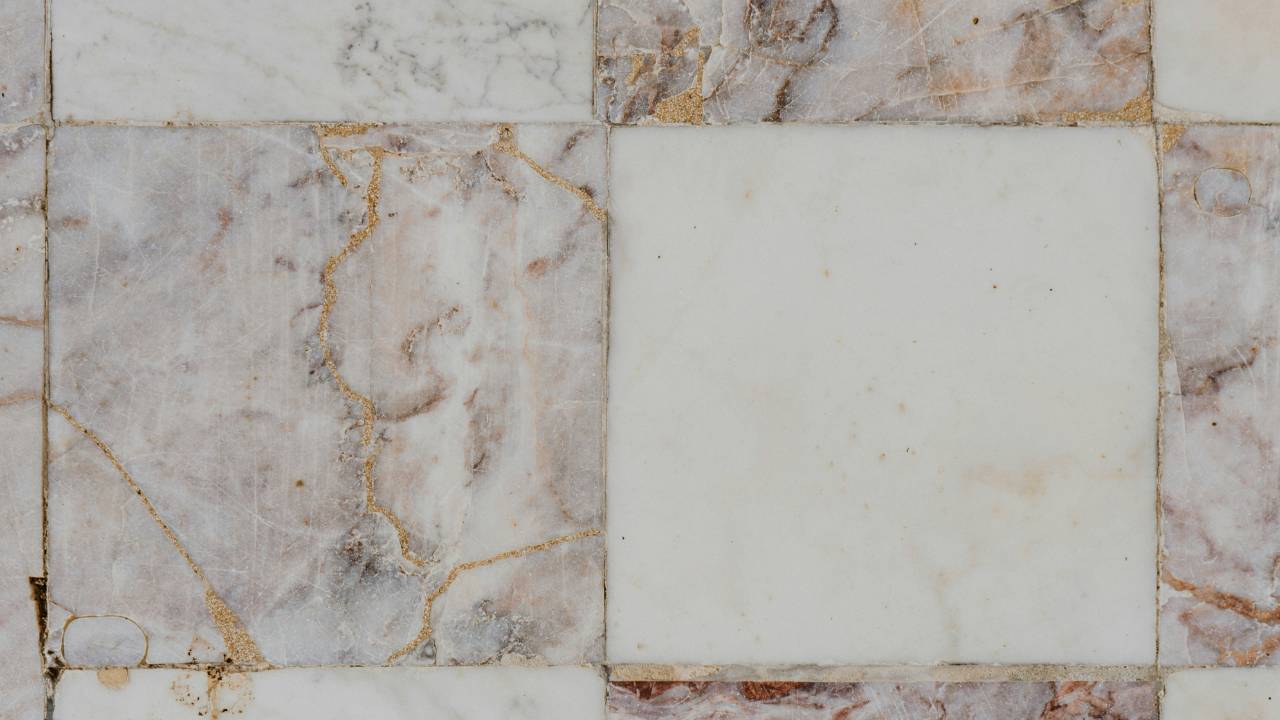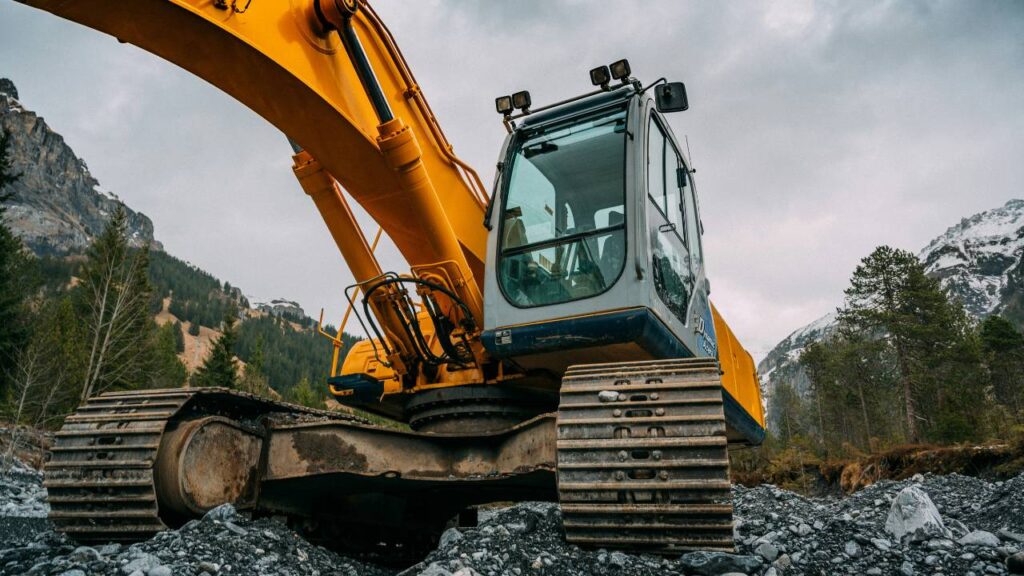
Choosing materials for construction can significantly impact both the aesthetic and longevity of your structure. Natural stone offers a range of benefits that make it a compelling choice for various building projects. Natural stone provides exceptional durability, ensuring that your constructions can withstand the test of time.
Aside from its strength, natural stone brings unique beauty that is difficult to replicate with man-made materials. Each stone has individual characteristics, offering a distinct look that adds a touch of elegance and sophistication to any project. Its timeless appeal can enhance both the interior and exterior of buildings.
Natural stone is also environmentally friendly. Sourced from the earth, it requires minimal processing compared to synthetic alternatives, which helps reduce your ecological footprint. Choosing natural stone demonstrates a commitment to sustainable building practices.
The Significance of Natural Stone
Natural stone has shaped human architecture for centuries because of its durability and timeless beauty. You’ll find it in historical landmarks and modern buildings alike, showcasing its versatility and connection to the earth.
Historical Context
Natural stone’s significance stretches back thousands of years. Ancient civilisations like the Egyptians, Greeks, and Romans used materials such as limestone, marble, and granite. The Pyramids of Giza and the Parthenon exemplify the long-lasting nature of these materials.
Mediaeval cathedrals, castles, and bridges in Europe often relied on stones like sandstone and slate. These structures stand as a testament to the stone’s durability, protecting them against the elements for centuries. Historical use of natural stone also underscores its inherent beauty, which remains undiminished over time.
Contemporary Usage
In today’s construction, natural stone still holds significant value. Modern architects use it for its aesthetic appeal and structural strength. Granite and marble are popular choices in both residential and commercial projects. Interior design trends often feature slate for flooring and granite for kitchen countertops due to their robust nature.
Natural stone also contributes to sustainable building practices. Its longevity reduces the need for frequent repairs or replacements, making it an eco-friendly option. Contemporary architecture often blends natural stone with other materials, achieving a harmonious balance between beauty and stability that connects you directly to the earth.
Environmental Impact and Sustainability
Using natural stone in construction offers unique environmental benefits and sustainability features, primarily through its minimal pollution and reduced embodied carbon compared to processed materials.
Quarrying and the Environment
Natural stone extraction, or quarrying, has a lower carbon footprint than manufacturing synthetic materials. Stone is sourced directly from the earth with relatively simple tools, reducing energy consumption.
Water usage in quarries is often part of a recycled system, minimising waste. Dust and noise pollution are concerns, managed through modern dust suppression technologies and thoughtful site management. Regulations ensure that quarries operate under strict environmental guidelines, preserving surrounding ecosystems. Using locally sourced stone also cuts transportation emissions, further lowering its environmental impact.
Sustainable Practices in Stone Use
Natural stone is a long-lasting building material, contributing to green building practices by reducing the need for replacements. Its durability means structures remain serviceable for centuries, promoting a circular economy.
Once quarried, stone waste can be repurposed for other construction uses, enhancing sustainability. Incorporating stone in construction boosts your building’s environmental credentials, as it doesn’t emit harmful pollutants and often requires minimal maintenance. Efforts are being made to ensure the entire lifecycle of stone, from quarrying to eventual reuse, supports environmental sustainability and reduces the embodied carbon footprint.
Benefits of Stone in Construction

Natural stone offers numerous benefits for construction projects. These include exceptional durability, low maintenance, and an unmatched aesthetic appeal that enhances the natural beauty of any structure.
Beauty and Aesthetics
Natural stone provides a timeless aesthetic that can significantly boost the visual appeal of any building. The unique colours and textures of stone make every construction project distinct. Unlike manufactured materials, no two pieces of natural stone are identical, which ensures a unique look.
Incorporating stone in construction adds a touch of elegance and sophistication. The material inherently provides a sense of permanence and grandeur. Its versatility allows it to fit various architectural styles, from rustic to modern.
Stone’s aesthetic longevity means it ages gracefully, often looking better over time. This ageing process adds character and charm to your structures, maintaining their allure for years.
Choosing the Right Stone
Selecting the right natural stone for your construction project involves considering the material’s durability, appearance, and environmental impact. Additionally, sourcing and transportation can affect the overall sustainability and cost of your project.
Selecting the Best Material
When selecting the best material, focus on your project’s specific requirements. For instance, granite is a popular choice due to its durability and resistance to weather conditions. Marble offers a timeless, elegant look but may require more maintenance. Consider sandstone for its natural beauty and versatility in indoor and outdoor applications.
Evaluate each stone’s maintenance needs. Granite typically requires less care compared to marble, but you will need to seal it periodically. On the other hand, marble can stain easily and needs regular polishing. By understanding the maintenance needs, you can select a stone that fits your lifestyle and long-term plans.
Look into eco-friendly materials. Some natural stones are more sustainable due to their local availability and minimal processing requirements. This reduces transportation emissions and supports local economies. Speak with your contractors about locally sourced options that meet your project’s specifications.
Sourcing and Transportation
Sourcing natural stone locally can greatly minimise transportation emissions, making your project more eco-friendly. Midland Stone Ireland is one such supplier that offers a variety of stones and related products. By choosing stones from local suppliers, you’ll support local businesses and potentially reduce costs.
Consider the impact of transportation. Heavy stones can incur high shipping costs and have a larger carbon footprint. If materials are sourced from distant locations, the environmental impact increases due to fuel consumption. Opting for locally sourced stone reduces these emissions and aligns with sustainable construction practices.
Communicate with your suppliers about the origins of the stone. Ensure they follow ethical sourcing practices, which not only supports fair labour conditions but also maintains the material’s quality. By choosing the right supplier, you can guarantee a balance between sustainability and high-quality materials for your construction project.
Variety of Stone Materials
Natural stone materials are renowned for their distinct textures, patterns, and colours, offering diverse options to cater to various tastes and needs.
Granite
Granite is celebrated for its exceptional durability and resistance to scratches and heat. This natural stone features a wide variety of colours and patterns, typically characterised by its speckled appearance.
You can find granite in shades ranging from light greys to deep blacks, as well as reds, blues, and greens. Due to its resilience, it is commonly used in high-traffic areas – like kitchen countertops – and especially for flooring. Granite’s maintenance is relatively straightforward, requiring periodic sealing to maintain its lustre and longevity.
Limestone
Limestone stands out for its subtle beauty and versatility. This stone is available in warm, earthy tones, such as beige, tan, and grey. Its fine, consistent texture often incorporates small fossils, adding unique character.
Limestone tends to be softer than granite, making it easier to shape and carve. This property makes it ideal for intricate architectural details, interior flooring, and even outdoor landscaping. While it offers a charmingly natural look, limestone does require sealing and regular maintenance to prevent staining and wear.
Marble
Marble is synonymous with elegance and timeless appeal. Famous for its veined patterns, marble is available in a variety of colours including white, black, green, and pink. Each slab boasts unique veining, ensuring no two pieces are the same.
Due to its softer nature compared to granite, marble is easier to cut and shape, making it a preferred choice for sculptures, countertops, and flooring. However, it is more susceptible to scratches and stains, necessitating proper care and regular sealing to maintain its beauty.
Slate
Slate is prized for its rich textures and layered structures. Typically found in shades of dark grey, black, green, and even red, slate provides a rustic yet contemporary aesthetic.
This stone’s natural cleft surface makes it an excellent choice for flooring, roofing, and wall cladding. Slate is highly durable and resistant to moisture, making it suitable for both indoor and outdoor use. Regular cleaning and occasional sealing help preserve its layered appearance and prevent flaking.
Sandstone
Sandstone is known for its grainy texture and warm, inviting colours including yellows, reds, and browns. Formed from compacted sand, this stone often displays beautiful, layered patterns.
Its softer composition makes sandstone easier to work with for detailed carvings and intricate designs. It is commonly used in building facades, garden paths, and patio flooring. While sandstone is relatively durable, it can be more prone to weathering, requiring occasional sealing and maintenance to preserve its appearance.
Design and Architectural Flexibility
Natural stone offers a remarkable range of versatility and aesthetic appeal for both interior and exterior applications. Its adaptability makes it a preferred choice in contemporary architectural design.
Interior Applications
Incorporating natural stone into interior spaces significantly enhances their aesthetic value. You can use it in flooring, wall cladding, and countertops. The variety of finishes available, from polished to honed, enables you to achieve different looks.
Natural stone enhances commercial spaces, adding a touch of sophistication to lobbies, offices, and retail environments. It not only meets practical needs but also elevates the overall design quality.
Stonework can be customised to fit any layout, making it ideal for both traditional and modern interiors. Its durability ensures that it remains a long-lasting investment.
Exterior Applications
For external use, natural stone provides robustness and durability. It’s often used in facades, landscaping, and garden features. The material can withstand harsh weather conditions without compromising its beauty or structure.
You have the option of various stones like granite, limestone, or slate, which can be tailored to match your architectural vision. Stone cladding is particularly popular for creating striking visual effects.
Whether it’s for a rustic look or a sleek, modern finish, natural stone adapts to various styles effortlessly. It adds an enduring, timeless quality to any structure.
Innovative Uses in Modern Architecture
In modern architecture, natural stone is being used in innovative ways. Its role extends beyond mere structural purposes to becoming a central design element in contemporary projects. Facades now use stone in unique patterns and textures.
Architects are beginning to incorporate stone in more fluid and organic forms, thanks to advanced cutting techniques. This material is no longer limited to traditional uses and is finding its place in futuristic designs.
Furthermore, natural stone can be combined with other materials like glass and metal to create stunning architectural contrasts. Its versatility truly shines in modern, cutting-edge designs.
Technical Advantages

Using natural stone in construction provides significant technical benefits. These include enhanced thermal mass and insulation, as well as superior fire resistance and structural integrity.
Thermal Mass and Insulation
Natural stone’s thermal mass is a key advantage. It can absorb, store, and release heat gradually, which helps to keep indoor temperatures stable. This means less reliance on artificial heating and cooling systems, leading to lower energy consumption.
Natural stone also offers excellent thermal insulation. Its density and thickness provide an effective barrier against external temperatures, contributing to the comfort of your building year-round. This sustainability aspect makes natural stone an eco-friendly choice, reducing the carbon footprint associated with maintaining indoor climate control.
Fire Resistance and Structural Integrity
One of the standout features of natural stone is its fire resistance. Unlike many other building materials, stone does not burn or emit toxic fumes. This enhances the safety of your building, offering peace of mind in case of a fire.
Natural stone also boasts impressive structural integrity. Its durability and strength mean it can withstand significant loads and pressures without deforming. This contributes to the longevity and stability of your construction, reducing the need for frequent repairs and thereby supporting sustainability by minimising resource use in the long term.
Economic Considerations
Using natural stone in construction can be financially smart for both short-term and long-term projects. This approach can help you manage initial expenses while potentially saving money on maintenance over the years.
Cost-Effectiveness
Natural stone materials are often viewed as an investment due to their durability and longevity. While the initial purchase price may be higher compared to other materials, the value they bring in terms of longevity and aesthetic appeal can offset these upfront costs.
Moreover, natural stone can reduce ongoing repair and replacement expenses. Natural stone tends to maintain its structural integrity over time, minimising the need for frequent repairs. In many cases, this translates to lower overall costs over the lifespan of the building. Additionally, natural stone can enhance a property’s value, potentially leading to higher resale prices.
Maintenance Costs
When it comes to maintenance, natural stone is relatively low maintenance compared to other materials. Routine upkeep usually involves simple cleaning procedures and occasional sealing, depending on the type of stone. This makes it a favourable choice for those looking to minimise continuous maintenance efforts and costs.
The cost of sealing and cleaning natural stone can vary, but it’s generally reasonable. Regular maintenance helps to preserve the stone’s appearance and durability. By investing in proper upkeep, you ensure that the stone remains in good condition for many years, avoiding costly repairs or replacement. This aspect can make natural stone a financially attractive option in the long run.
Installation and Maintenance

Natural stone can be both an aesthetic and practical choice in construction. Its installation and maintenance require attention to detail and a thoughtful approach to ensure longevity and beauty.
Professional Techniques
Hiring a professional is often the best way to ensure the natural stone is installed correctly. Skilled labourers are familiar with the intricacies of handling heavy and irregularly shaped stones. They use specialised equipment and techniques to cut and fit stones precisely. This helps create strong and durable surfaces.
Professionals will also ensure that the stone is properly sealed. Sealing protects the stone from moisture, stains, and wear. This initial step is crucial for maintaining its appearance and durability. Regular cleaning is essential, using pH-neutral cleaners specifically designed for stone surfaces. Abrasive cleaners can damage the stone.
DIY Possibilities
If you prefer a hands-on approach, installing natural stone yourself is possible but requires careful planning and effort. Start by sourcing the right materials and tools. You’ll need heavy-duty cutting tools and precise measuring instruments. Laying a stable base is essential to prevent shifting or cracking over time.
Sealing the stone yourself is also critical. Use a high-quality sealant and follow the manufacturer’s instructions closely. This helps protect against stains and moisture. Be prepared for ongoing maintenance, including regular cleaning with suitable products. Avoid using harsh chemicals; instead, choose cleaners that are gentle yet effective.
Conclusion
In choosing natural stone for your construction projects, you’re investing in durability and timeless beauty. The aesthetic appeal of natural stone can enhance the overall value of your property, making it an excellent choice for both residential and commercial buildings.
Natural stone offers impressive longevity, reducing the need for frequent repairs or replacements. This can be a key factor in strategies for construction companies to win more projects by showcasing the cost-efficiency and long-term benefits of using natural materials.
By using natural stone, you also benefit from its environmental advantages. Sourced responsibly, it can be an eco-friendly option that supports sustainable building practices. This aligns well with modern environmental standards and regulations, which can appeal to eco-conscious clients.
The variety of natural stone options available provides flexibility in design. Whether it’s granite, marble, or limestone, each type brings unique characteristics that can be tailored to suit different styles and preferences.
Utilising natural stone in construction adds a touch of luxury and sophistication. It’s a simple way to elevate a building project, ensuring a lasting impression.